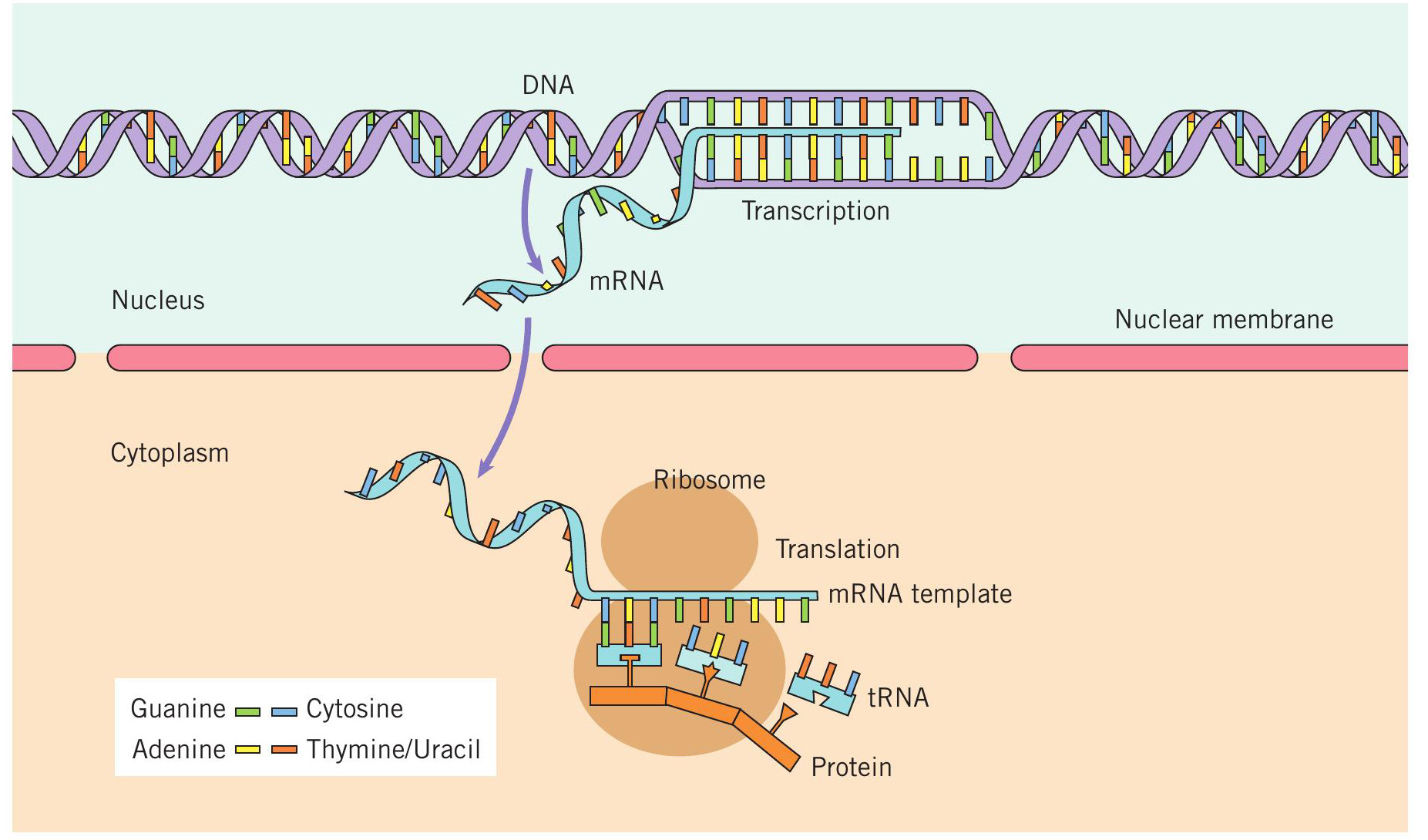
Adiscovery made 10 years ago has started a revolution in scientific research. Two American researchers, Andrew Fire and Craig Mello, found that injection of RNA into a roundworm had dramatic effects on how genes in this small worm worked. They found that injection of double-stranded RNA (see Box 1) that had the same base sequence as the DNA of certain genes caused those genes to be turned off. The far-ranging significance of this discovery earned Fire and Mello the 2006 Nobel prize in Physiology and Medicine and has led to a flurry of research into how this phenomenon, now called RNA interference (RNAi for short), takes place in other organisms including humans.
The sequence of events that leads to the information contained within genes being used is now well established (see Figure 1). The information contained within the DNA sequence of a gene is copied into a chemically similar molecule called messenger RNA (mRNA). This mechanism of copying DNA to mRNA is called transcription and it is carried out by an enzyme called a polymerase. Transcription can be turned on or off by the cell to regulate the expression of genes. Once a gene is turned on and copied into mRNA, this mRNA is transported from the nucleus to the cytoplasm of the cell, where it is used by the ribosomes to make protein. Cells use proteins to carry out essential functions. The production of proteins in a cell was therefore assumed to be dependent on the transcription of a gene.
Your organisation does not have access to this article.
Sign up today to give your students the edge they need to achieve their best grades with subject expertise
Subscribe




